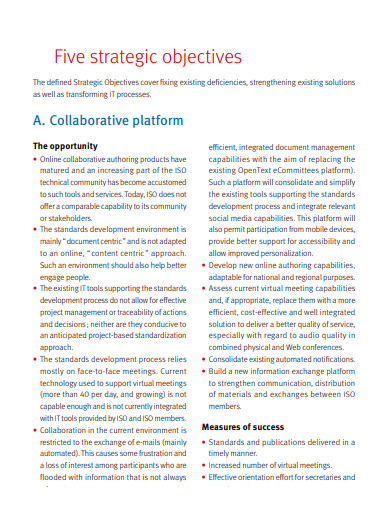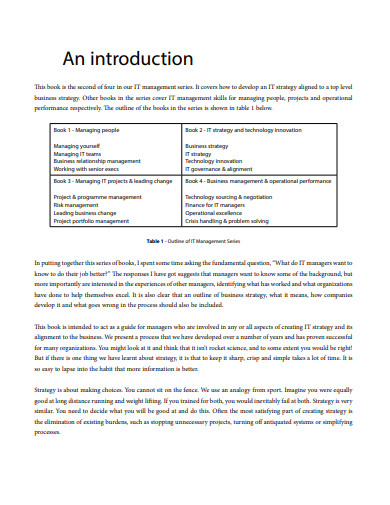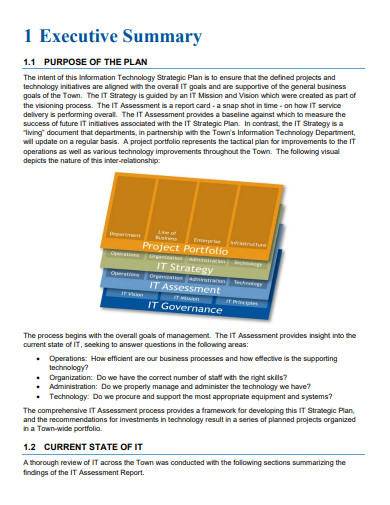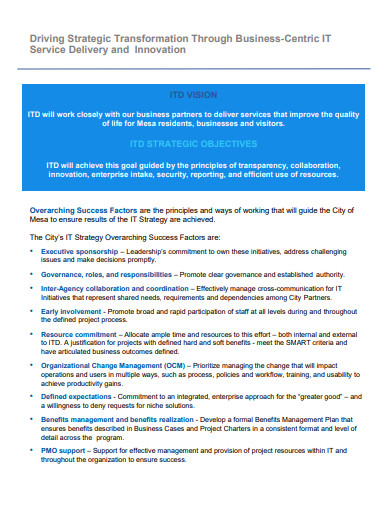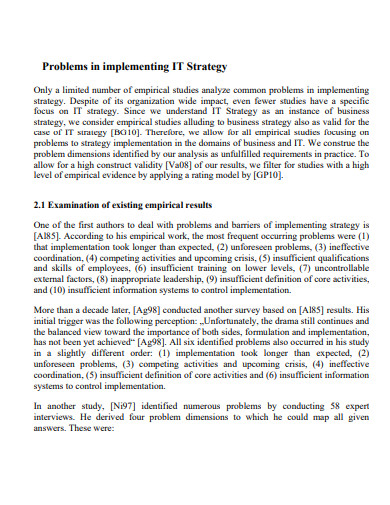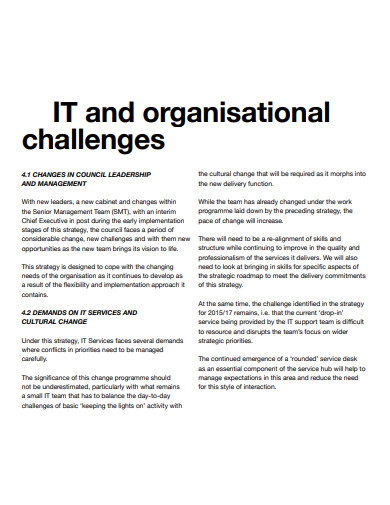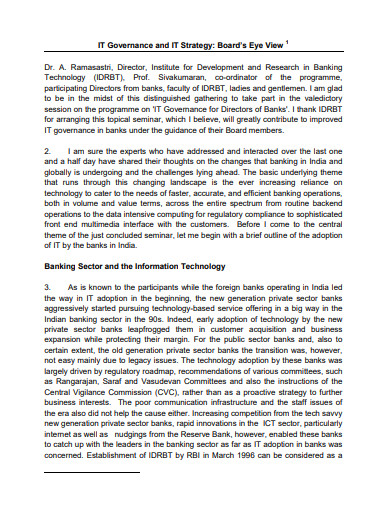15+ IT Strategy Examples to Download
Information technology has made things easier for businesses to take on most of their operational processes, especially in the digital communication aspect. Because of the benefits it brings to organizations, more and more enterprises invest in the planning, development, and accumulation of IT applications. For the safekeeping of these undertakings, a business or corporate strategy document that revolves around IT operations is produced. You can think of it as a roadmap or a framework of an IT strategy presentation. But what does an IT strategy consist of? Perhaps a SWOT analysis? Let’s find out by browsing over the many examples below, and comprehending on the article that comes after them!
15+ IT Strategy Examples
1. IT Strategy Plan
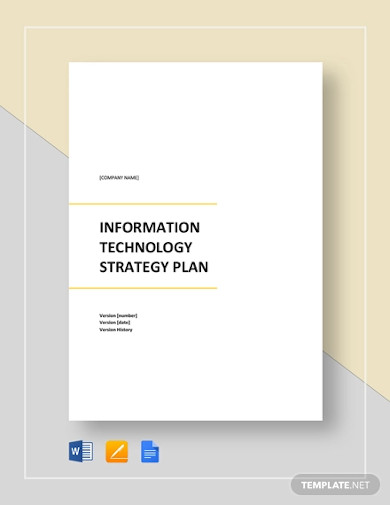
2. IT Strategic Plan Example

3. IT Strategy Presentation

4. IT Strategy SWOT Analysis

5. IT Strategy Mind Map
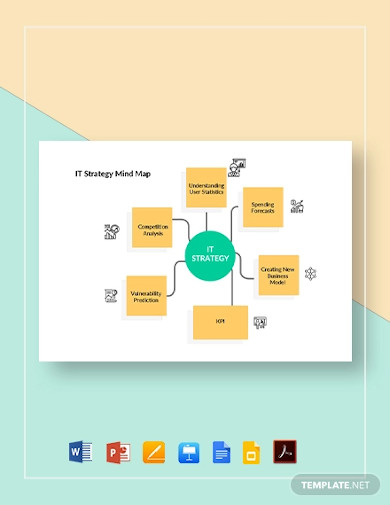
6. IT Service Strategy

7. IT Security Strategy Roadmap

8. Sample IT Strategy Example
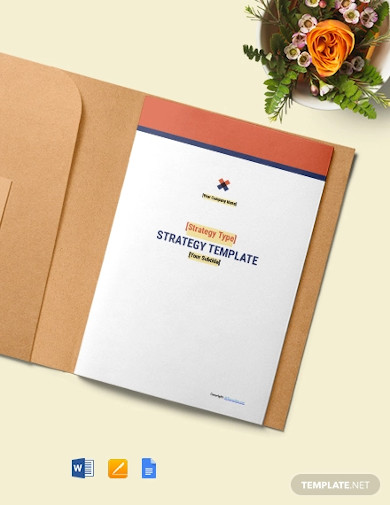
9. IT Consulting Strategy
10. IT Strategy and Technology Innovation
11. IT Strategic Plan Example
12. IT Strategy and Roadmap Report
13. IT Business Strategy
14. Federal Health IT Strategic Plan
15. Sample IT Strategy
16. IT Governance and IT Strategy
What Is an IT Strategy?
An IT strategy pertains to the setting of actions that improve an organization’s IT-related operations. Margaret Rouse of SearchCIO said that such a process document should be covering five management areas, including cost, human capital, hardware and software, sales, marketing, and risk. With that being said, it’s clear that the strategy can be very complicated for ordinary people. In fact, the Software as a Service (SaaS) software developer, Cascade, reported that only 5% of the employees fully understand their respective companies’ business strategic plan. This means that if you’re planning to improve your company’s IT functions, you should be conducting qualitative and quantitative research about the matter.
IT Trends for 2020
Every year, innovations present themselves to different industries. Some of them take abstract forms, like strategies, and many others take more perceptible objects, such as gadgets. Now that our world has become more dependent on digital gadgetry, it’s not surprising that the most affected segment is the IT industry. Let’s learn some of the most discussed IT innovations for this year.
1. Cloud computing platforms have begun to set up standards, making their features more compatible and portable to users.
2. More businesses improve the infrastructures of their data inventory. This allows them to store more pieces of information on the cloud.
3. The internet of things will become more relevant, especially in the industrial and automotive sectors.
How To Organize IT Strategy
Creating an IT strategy is an important step to reach your corporate goals, particularly the ones that involve IT systems. As mentioned above, producing one will not be an easy task, but someone’s gotta do it for the betterment of your company. To help you achieve both of your short-term goals and long-term company goals, we’ve prepared an outline below that guides you in making a thoroughly organized IT strategy.
1. Provide the Mission Statement
Start your process document by expressing what your company aims to achieve for your IT operations. It’s like setting your short-term and long-term goals and sharing them with specific people. By providing your strategy’s mission statement, you provide stakeholders and IT staff a heads up as to where your plan is going. Doing so also explains to the people involved the true purpose of their tasks, reshaping their mindset to a more objective one.
2. Conduct a SWOT Analysis
Having a fact-based knowledge of your IT department’s internal strengths and weaknesses, as well as on its external opportunities and threats, is highly advantageous. By gathering those factors through a strategic planning SWOT analysis, it will be easier for you to formulate, maintain, and manipulate appropriate activities for your mission. It is also one way of discovering innovative methods and technologies that can be of great use for your IT strategies. There are many reasons why every business needs a good SWOT analysis, it’s best to check on them in advance.
3. Set Activities
Whatever results you have on your SWOT analysis, set your activities in accordance with them and with your mission statement. The activities should further enhance your company’s current strengths, eliminate weaknesses, capitalize on the opportunities, and mitigate the likeliness of threats. For example, if your company is currently running low in data storage capacity, then you must use the opportunities presented by hyper-converged infrastructures. It’s an IT system that virtualizes hardware infrastructures and their corresponding functions, like computing, networking, and storage.
4. Make Roadmaps
A roadmap is a simpler form of your activities. It sorts them according to their order. By including it in your IT strategy document, you provide your stakeholders and IT staff with an effective and easy-to-understand communication tool. Roadmaps also come with work timelines that guide and motivate your employees in completing their obligations before or in-time with the due date. Needless to say, such a visual representation is necessary for making your IT strategy paperwork a success.
FAQ’s:
What is the internet of things (IOT)?
The internet of things refers to the cloud computing devices that are installed on everyday objects, giving them the ability to send and receive data via the internet. Good examples of this are security cameras, global positioning systems (GPS), smart TVs, smart speakers, wearable, and many more.
What are the phases of strategic planning?
Companies follow different phases in their strategic planning. The most common includes the preparation, planning, implementation, and revision.
What are the biggest tech companies in the United States?
The giant companies in the tech industry are Facebook, Amazon, Apple, Microsoft, and Alphabet Inc. When combined, these companies will draw a market capitalization of USD 4 million. These companies make it hard for aspiring tech entrepreneurs to make an entry.
The world-renowned Albert Einstein once said, “Any intelligent fool can make things bigger and more complex. It takes a touch of genius – and a lot of courage – to move in the opposite direction.” With the technological advancements that our generation is constantly experiencing, we can say that there is so much in this world that we don’t know of yet. In information technology, the search for unique ideas and solutions is never-ending. Many IT system developers are bound to traditional designs, while there are just as many developers who are devoting themselves to bring us some fresh innovations. Regardless of what developers can come up with, one thing’s for sure – the successful actualization of their concepts is a product of a good strategy.



